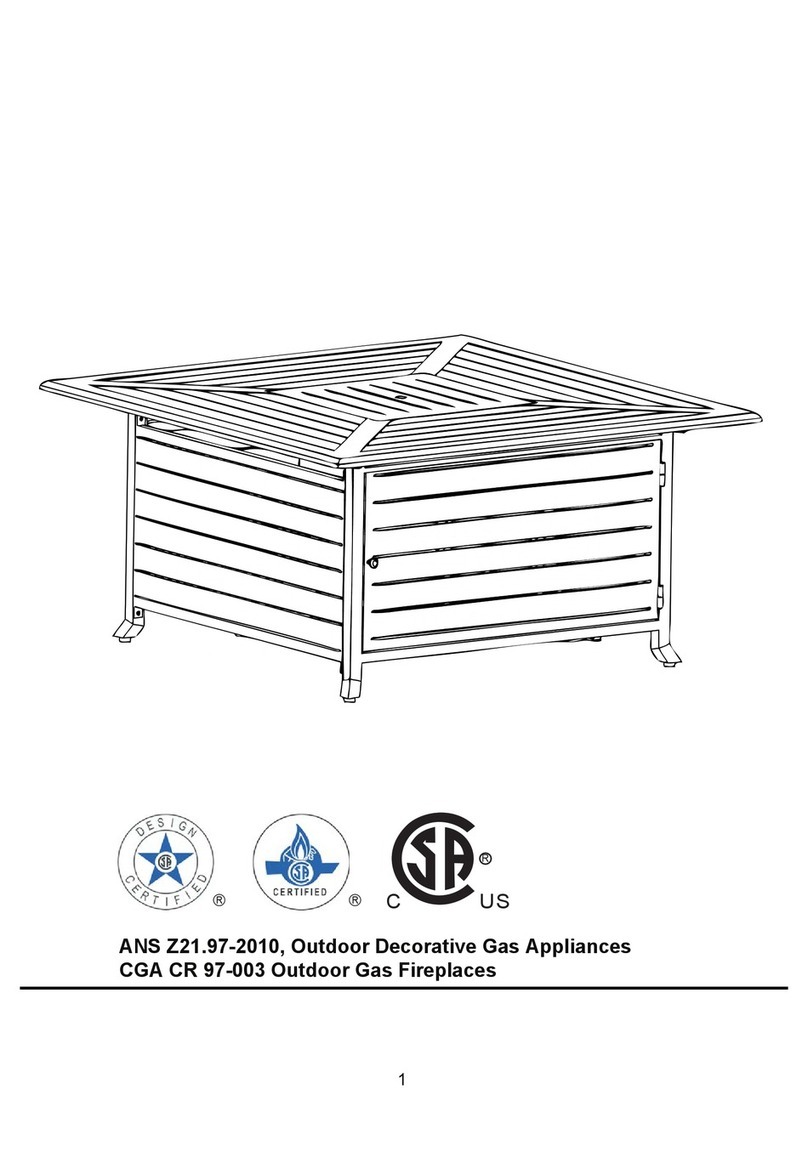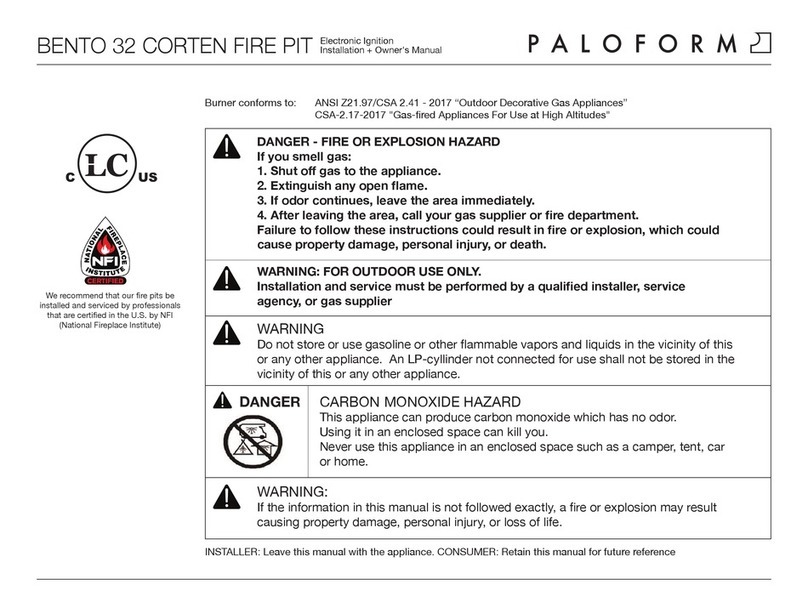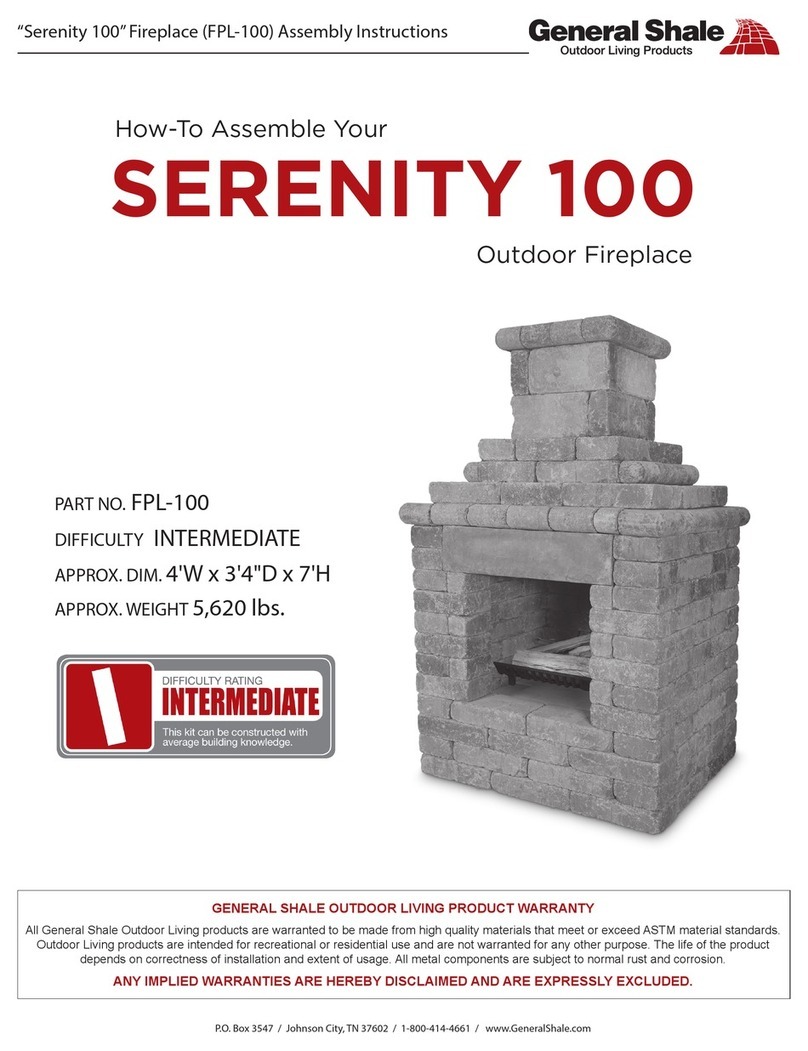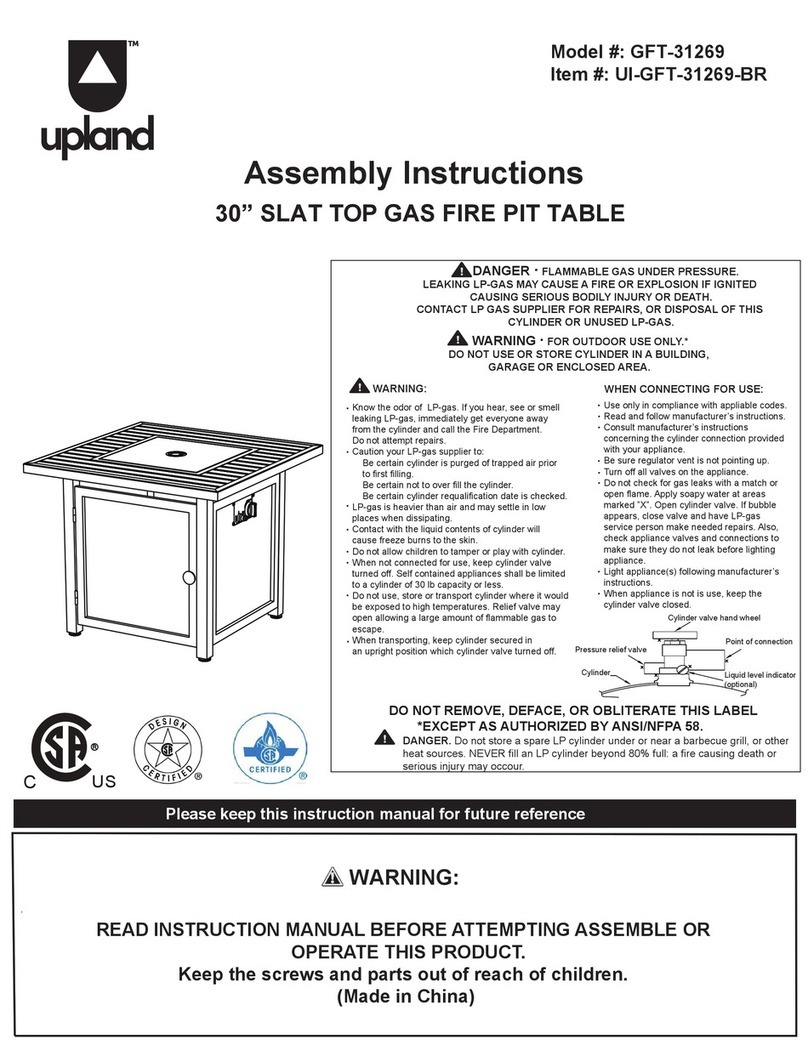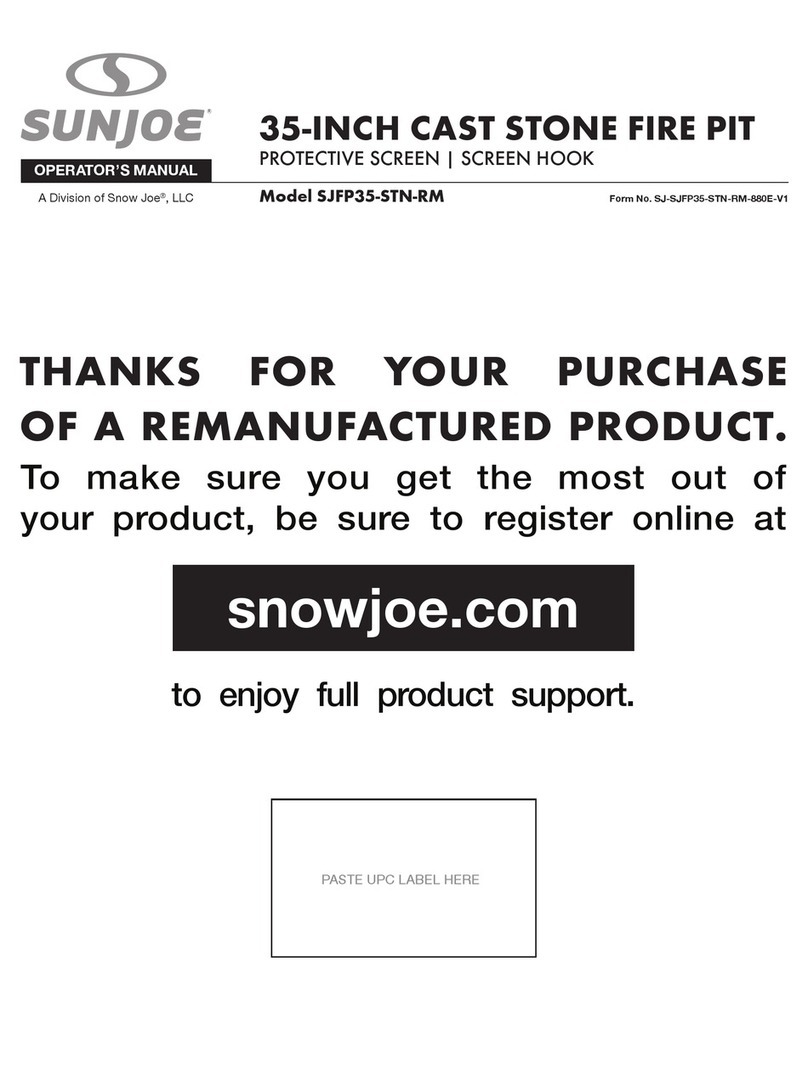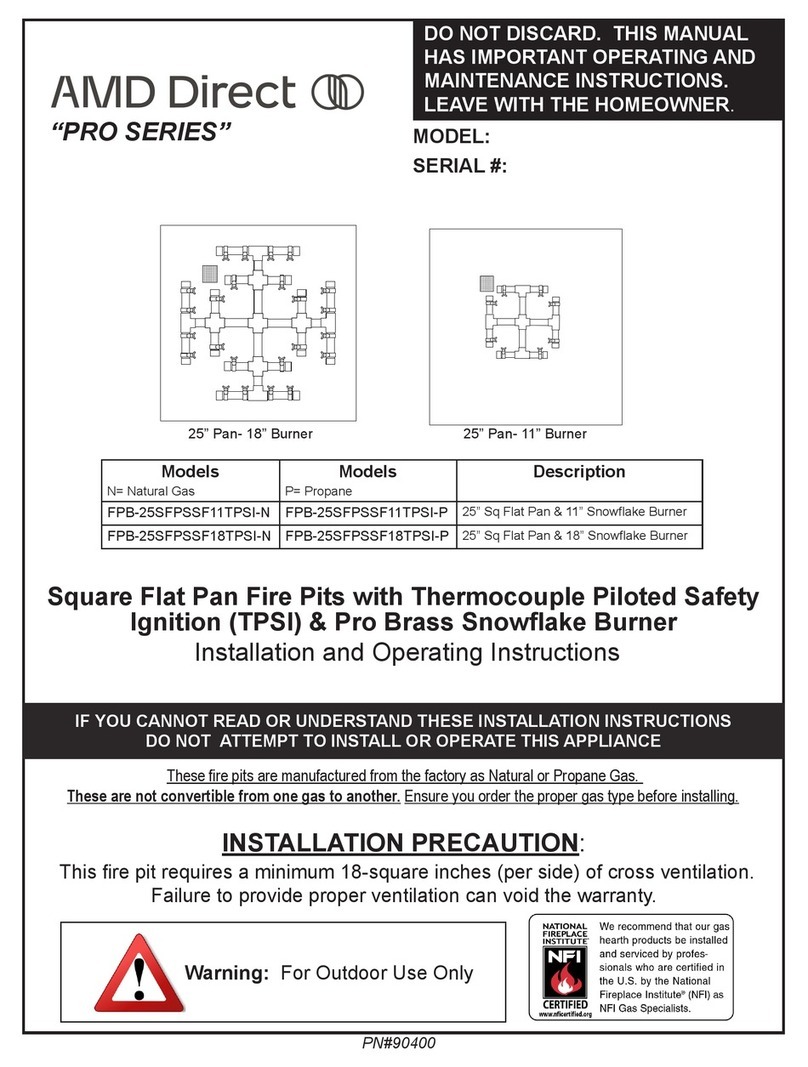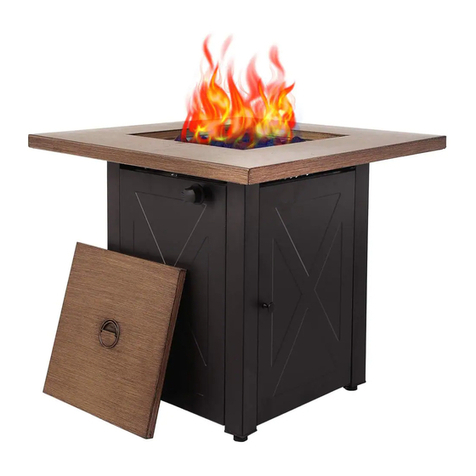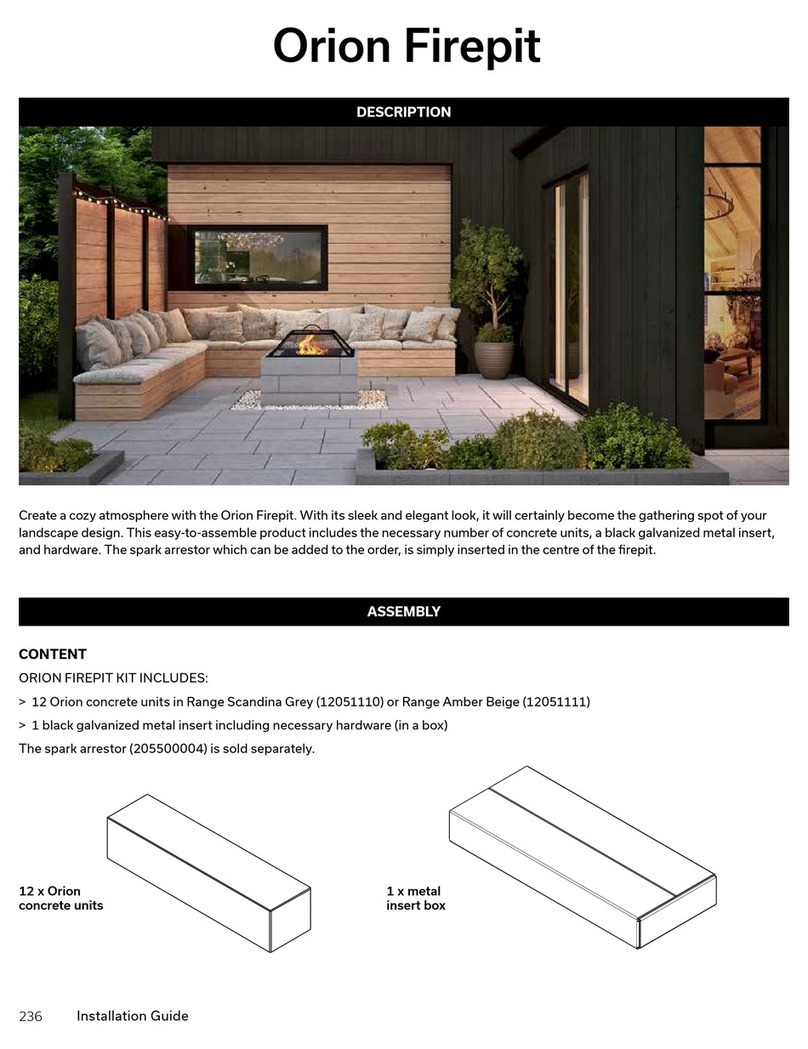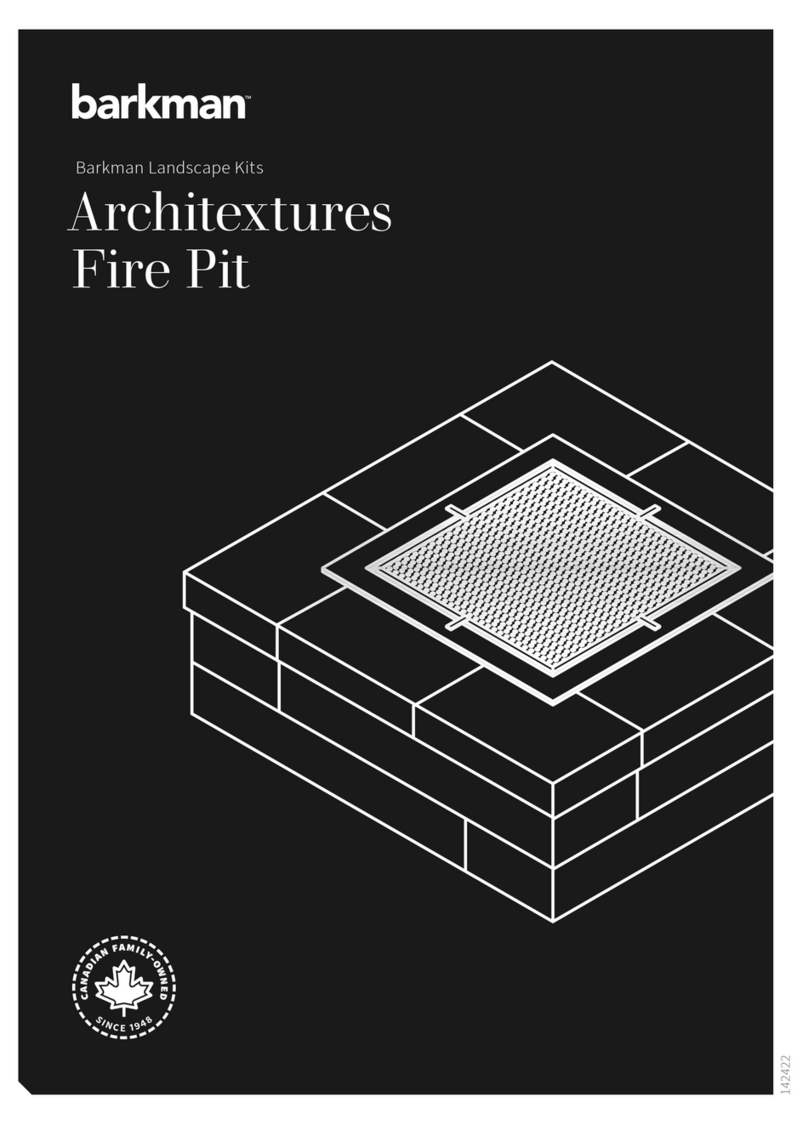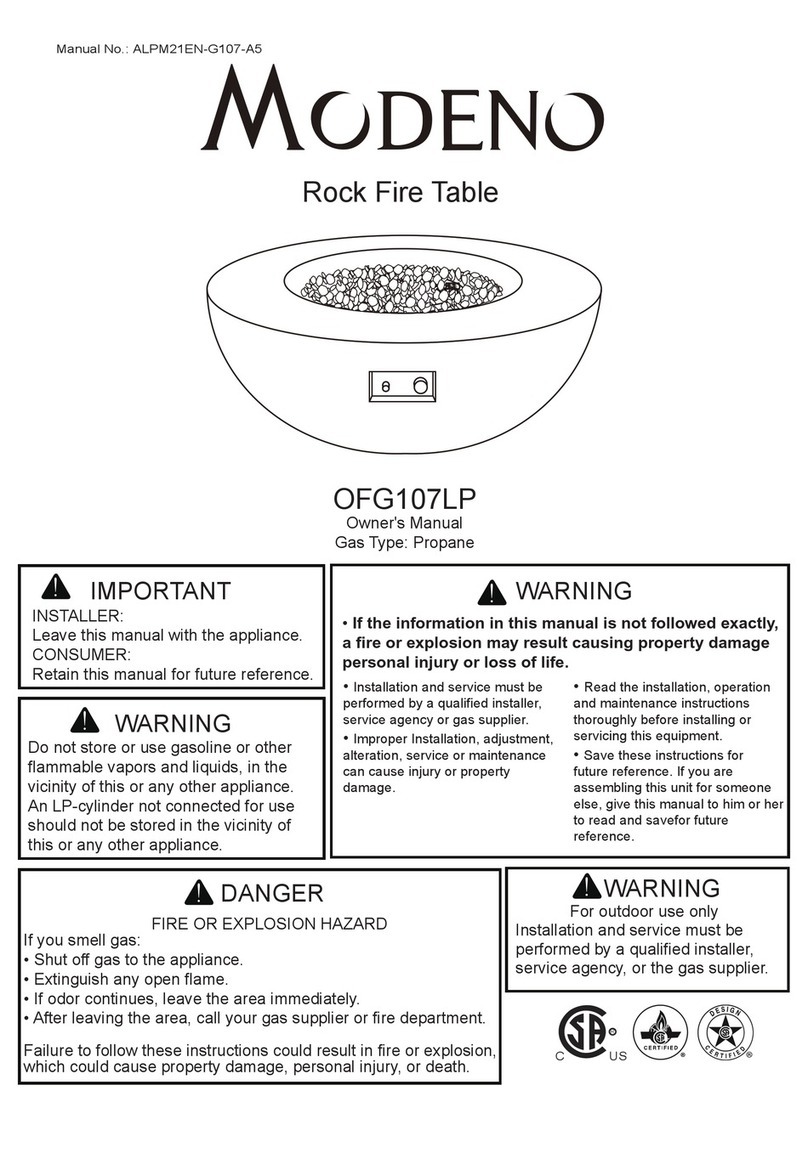
4
•Keep any electrical supply cords and types of hoses away from the fire pit.
•Use your fire pit only on a firm level surface. This is not designed for recreational vehicles, and should not be
installed on a boat or marine craft.
•Keep the fire pit protected from adverse weather, including rain and winds.
•Many backyards have areas that are partially closed off, such as balconies and pergolas. In some cases, it is hard
to decide whether these partially enclosed areas should be classified as indoor areas, particularly in terms of
permanent (non-closable) ventilation. Consult the AHJ (Authority Having Jurisdiction) or local contractor of any
uncertainty. THIS FIRE PIT SHALL NOT BE LOCATED UNDER OVERHEAD CONSTRUCTION.
•Will get hot during use. Use extreme caution when operating.
•Do not touch hot surfaces.
•Close supervision is necessary when this or any appliance is used near children. Keep children at a safe distance
during operation and until the fire pit has cooled off.
•Children should not be left alone or unattended in an area where any appliance is in use. They should never be
allowed to touch, sit or stand on any part of the fire pit.
•Do not store any LP cylinder or tank in the area of fire pit or any other appliance. Never store an LP cylinder or
tank indoors, or within the reach of children.
•The use of accessories or components not recommended by the manufacturer may cause injuries and will void
warranty.
•Never lean over the surface when lighting or during use.
•Never use in windy conditions.
•Wear proper clothing when operating. Loose-fitting or hanging garments should never be worn while using the
fire pit.
•Never place a “cover” over the fire pit while hot.
•When fire pit is burning, never leave unattended.
•Be cautious after the fire pit has stopped burning that anyone does not touch the fire pit on any part, as the fire
pit will have residual heat built up in the materials.
•Fire pits are not designed for cooking food on. Refrain from using fire pit as a method of cooking.
FIRE PIT OPERATION
•Wind and gusty conditions will affect the flame in an unpredictable manner. If conditions exist that are not safe,
do not use fire pit.
•Do not use if any part of the fire pit has been submerged under water. Immediately call a qualified service
technician to inspect the fire pit.
•Keep leaves, sticks, wood, paper, clothing, food material, and other solid fuels away from the fire pit. Ensure
that there are no objects over the top or sides of the fire pit that could interfere with safe operation.
•When not in use, the fire pit must be covered at all times.
•DO NOT use solid wood, gas. Use appropriate wood pellets only.







